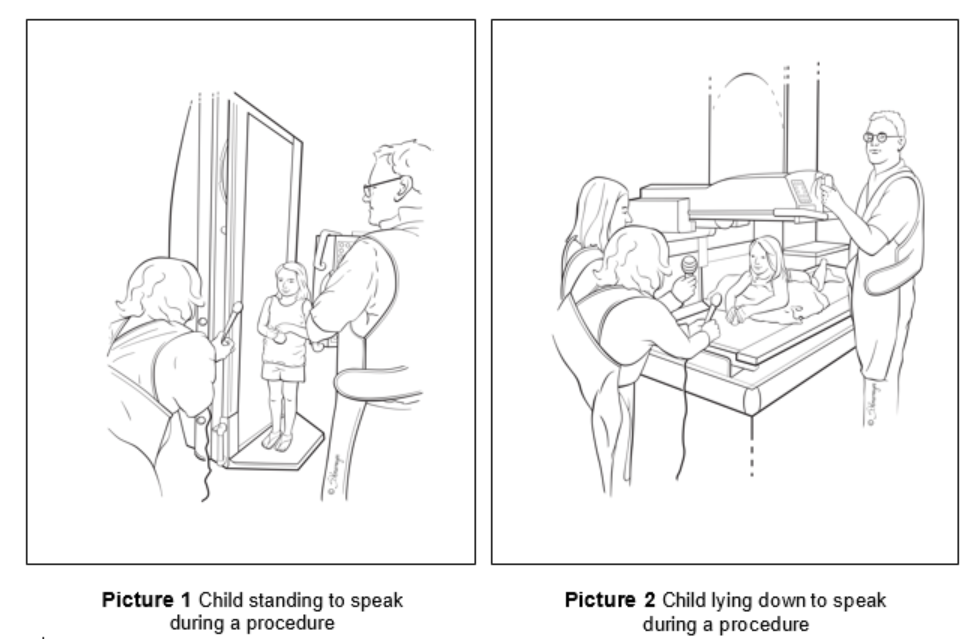Multi-View Videofluoroscopic Speech Study (MVSS)
![]()
A multi-view videofluoroscopic (video floro SKOP ik) speech study, or MVSS, is a procedure to see how the palate functions during speech. It is short and easy for your child to do. It is basically an x-ray movie taken while the child talks. The speech therapist and radiologist carry out the procedure together. Other people, such as a Child Life specialist, may also be in the room. The Child Life specialist can bring toys, activities, and other things to distract and make your child less nervous about the procedure.
The radiation from the procedure is very low-dose. The actual MVSS procedure takes about 60 to 90 seconds. Your entire visit may last around 30 minutes to prepare your child for the procedure and discuss findings afterward. Typically the radiologist takes pictures from the side (lateral) view and then from above the head during the procedure. You may be in the room with your child for the procedure, unless you are pregnant or there is a chance you could be pregnant. We will ask you to wear a special “apron” to shield your body from radiation exposure during the procedure.
Before the Procedure
- Explain the procedure to your child at a time you feel is best and in a way he or she will understand.
- You do not need to do anything special to get your child ready for this procedure unless the doctor gives you special instructions.
The Use of Contrast
In order to best see the soft tissues of the throat and palate in the exam, we use a contrast material. Just before the procedure, the radiologist will squirt a small amount of liquid barium contrast material into your child’s nose (this looks like milk and can be flavored to taste and smell like chocolate or strawberry). This is best done with the child lying on his or her back on the fluoroscopy table and then sniffing the liquid up into the nasal cavity so it coats the back of the throat.Speech Samples
Once the procedure begins, we will ask your child to stand still and face the speech therapist (Picture 1). The therapist will then ask your child to repeat simple words and sentences like Puppy, Baby, Daddy, Bye-Bye, Buy baby a bib, Pet a puppy and so on, into a microphone. The speech therapist will work with your child to find out which words and sounds are best for the child to say during the procedure. Then the child will lie on his or her stomach on the exam table and say a few more words in this position (see Picture 2).
The procedure will be video recorded so your child’s medical team can review it with you afterwards.This will help the team decide if your child needs surgery, speech therapy, or continued monitoring of the current speech disorder.

Risks and Possible Complications
Very rarely, the child may have allergic reactions to the barium contrast. This can cause trouble breathing, swelling and hives. Allergic reactions are usually well-controlled by medicine, but in extremely rare circumstances can be life-threatening. If your child has a known allergy to barium contrast, please tell your practitioner before the procedure.After the Test
Your child may eat his or her usual foods and return to normal activities. Your child may have slight discoloration of stools. This is normal and due to the barium contrast leaving his or her system.
After the exam, your child’s medical team will discuss the results of the procedure. They will contact you about the follow-up plan for medical care for your child. If you have any questions about your child’s procedure, be sure to ask the child’s doctor, nurse, or technologist, or call the Department of Radiology at (614) 722-2350.
If you need to cancel or reschedule your appointment, call (614) 722-6200.
HH-III-148 03/19 | Copyright 2019, Nationwide Children’s Hospital

